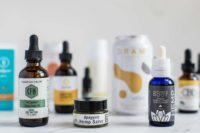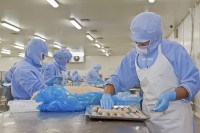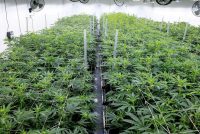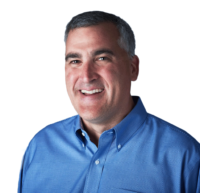Pacific Northwest heat waves have been challenging growers—and their plants—since June. What do these extreme heat waves mean for hemp crop harvest this fall?
Gordon Jones is an assistant professor of general agriculture based at the Southern Oregon Research and Extension Center for Oregon State University. Jones says well established hemp plants, transplanted in good conditions with proper root growth, can withstand a fair amount of heat stress—as long as they have access to water.
But with extreme heat come other obstacles like reduced access to water, wildfire smoke and declining worker morale.
“On some grand level, the smoke, the heat, and the drought are connected, and we could probably have a climate change discussion at the macro scale,” says Jones. These challenges make growing hemp in extreme heat a game of survival. However, there are steps farmers can take early on to prevent heat stress and still have a successful harvest.
What is an ‘Extreme Heat Wave’?
The World Meteorological Organization states that a heat wave is when the daily maximum temperature exceeds the average maximum temperature by 9 degrees Fahrenheit for more than five consecutive days. From June 24 to June 29, Pacific Northwesterners experienced a 1-in-1,000-year heat event when temperatures peaked at 116 degrees.
In extreme heat conditions, hemp leaves droop and fold up in a protective measure. If the stress is not mediated, they will yellow and become crisp. Once a plant is matured, there’s not a lot of changes growers can make, warns Cedar Grey, founder of Siskiyou Sungrown, a CBD wellness product brand in Southern Oregon.
For hemp farmers, high temperatures aren’t the only threat to crops and farmers during extreme heat events. “When it gets to that point, your plant is in trouble,” he says. “By the time the plant is mature, I don’t think there’s a lot of wholesale changes you can make other than ensuring that your irrigation is on point.”
For some hemp farmers, irrigation is exactly the problem amidst high temperatures and other heat-related challenges.
Challenges for Growing Hemp in Extreme Heat
Heat isn’t the only problem. Water shortages, reduced or adjusted labor hours and questions around the impacts of smoke from nearby wildfires have some farmers wondering if they will reach harvest with a successful yield.
Hemp Plants Are Thirsty: Water Shortage and Restrictions
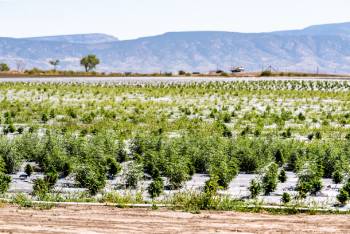
Kristina Blohkin/Adobe Stock
The Talent Irrigation District, Rogue River Valley Irrigation District and Medford Irrigation District are part of the U.S. Bureau of Reclamation Rogue Basin Project, where Jones focuses most of his work. These districts supply water to thousands in Oregon, and Jones says water levels have never been so low. “The irrigation season usually runs from April 15 through Oct. 15 in the ideal year,” says Jones. “This year, water from those irrigation districts was shut off at the end of July and the beginning of August.”
Ideally, hemp plants go into the ground in June in Jones’ region. Harvest normally begins in September and will run through October. To have the water shut off in July, says Jones, growers will not have an adequate water supply to grow a good yielding crop of hemp, especially those that planted towards the end of the season. Where he used to see large bushy plants, this year Jones sees smaller hemp crop. “I certainly think that that water limitation and some heat stress in June … would limit the size of the size of those plants.”
Impacts of Smoke are Not as Bad as Some Assume
Siskiyou Sungrown is one of the lucky ones, with rights to a deep well that’s kept their crop watered all season long. Grey says sunny and dry weather during harvest is a good thing for the drying process. However, extreme heat and dry conditions are ripe for wildfire—and smoke. Growers and consumers alike are wondering how much impact smoke has on hemp plants.
It is known that wildfire smoke can affect the aroma and flavor of wine grapes. Near Siskiyou, grape growers have had problems with wildfires altering the quality of grapes. However, preliminary research and consumer quality reviews, have not reported any change in aroma or flavor of cannabis grown with surrounding smoke.
“Usually it’s a story of someone looking at the front page of a newspaper on the East Coast, calling and asking, ‘Are you going to send me smoky hemp?'” says Jones. “Or somebody from a competing region saying. ‘Buy my hemp because we’ve not been affected by wildfires smoke.’ The reality is that no research or customer feedback suggests smoke is affecting the quality of hemp flower.”
Smoke can block sunlight. Less light overall can impact how a plant photosynthesizes and may result in smaller plants. In addition to heat and moisture stress, prolonged exposure reduction of sunlight due to smoke can contribute to smaller plants, Jones says.
Some consumers have wondered what impact ash fall has on hemp products. But it’s not a concern, says Jones. It can be easily blown off and won’t clog pores long-term. Not only is ash not a major issue, but every gram of ash that falls on the ground contains nutrients like calcium and potassium. The movement of nutrients across regional ecosystems can be considered a small amount of fertilization.
Changes to Workforce
It’s not just the plants that are getting stressed out with heat and smoke. Farmworkers have adjusted their schedules and lives around the heat. Grey says some days they started at 3 a.m. to beat the heat. In response, OSHA issued emergency rules to protect workers. Beyond physical exhaustion, Grey says, his team is mentally tired of heat and smoke. “Far and away the greatest impact of the smoke is on the health and morale of the farm team,’ says Grey. “It definitely affects our routine. When we get weeks of hazardous smoke levels, everyone’s morale plummets.”
How Growers Can Protect Their Plants in Extreme Heat
Growing hemp is a continual learning process, but there are proven ways to give plants the best shot at survival for a successful harvest. Farmers’ best bet? Get plants well-established early on.
Establish Plants Early in Good Conditions
A well established plant has a great chance of holding up against extreme heat, smoke and even temporary water shortages. “When they are well established, been in the ground, and have grown good roots, they’ll be resilient,” says Jones. “That’s what we saw for those who planted in early June, a couple weeks before the heat wave. When they had gotten through transplant shock, they did fine.”
At Siskiyou Sungrown, Grey focuses on living soil and uses organic amendments and regular soil testing to foster healthy soil. “We compost all of our on-site organic matter, all of our organic waste. The roots, the stems, the leaves, we compost all of that and put that back into the soil, too, so we’re adding lots of organic matter to the soil every year.” Grey also rotates planting rows every two years and takes a dozen or more samples across fields multiple times a season to amend appropriately.
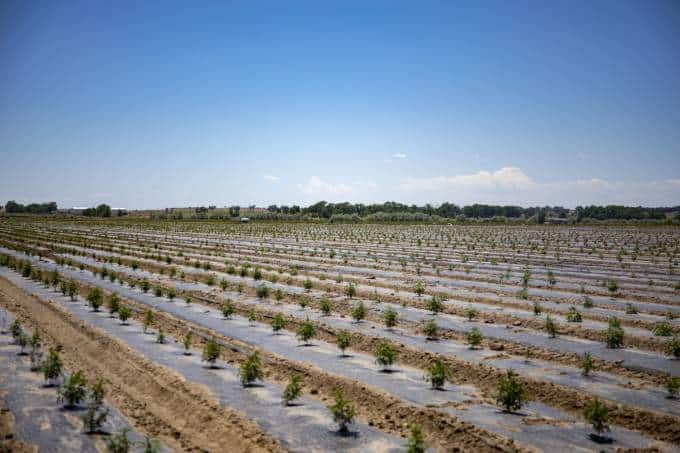
Isaac/Adobe Stock
Keep Hemp Plants Cool
If hemp plants can keep water flowing from roots to leaves, and then evaporate it into the atmosphere, much like our own sweat process, they can keep themselves cool. Jones reiterates it all comes down to the water. “There were folks who transplanted just a few days before that heat wave came,” says Jones. “And some of those fields look really poor.”
Grey also suggests planting in native soil and using a cover crop to keep plants cool. Native soil stays cooler than raised beds and pots. Grey uses a thick layer of mulch, particularly rice straw, which breaks down quickly because of its aquatic nature. This helps keeps the roots cool and moist. Other cover crops farmers can use include clover, buckwheat or oats.
Consider Backup Water Sources
If growers are in an area with water shortages, there is not a lot that can be done.
In water emergencies, there may be possibilities for farmers to gain access to other agricultural water sources like wells or ponds. “Gaining access to new agricultural water is a reasonably challenging process,” Jones says. “They are probably some rare justifications where new wells can be drilled. In some cases, people can get permission to dig a pond on their property to hold water which is something that’s handled by our watermaster’s office.”
In some cases, farmers are choosing to water only the best sections of the crop. Jones watched a farmer sacrifice smaller, weaker plants to reserve the limited water supply he had, for his more-promising crop. “He went ahead and made the decision to cull out those weaker plants … to be able to allocate all of his water to his best-looking plants, rather than trying to keep a poor-looking section of the field limping along,” says Jones. Other farmers have tried bringing water from other sources in by truckloads, but this is a tedious and likely inefficient process for large operations.
A long-term solution would involve changing irrigation infrastructures, but leaky canals and aging irrigation systems are as much a social and political conversation as it is an agricultural one. The cost of infrastructure changes would be hundreds of millions of dollars, says Jones, and a solution that growers can think about and participate in, but not likely to happen in the next few years.
Plant Varieties with Shorter Seasons Can Help Farmers Beat the Heat
Oregon gets most of its water in the fall and winter months. Jones remembers that this year, the reservoirs were not filling properly in February and March. Paying attention to those details can help growers plan, particularly with what hemp variety they choose to plant.
Most hemp growers use a daylight-sensitive variety. It gets planted in Spring, grows vegetatively until it is cued (by daylength) to flower in late summer or fall, and is harvested in September or October. That is a long season and requires water the entire time. Jones points out, however, there are hemp varieties that are daylength neutral, or autoflowering. These plants don’t need a daylength cue. Plants go in the ground and in 50-75 days, plants grow to maturity. “There were a few growers who were able to plant their [autoflowering] crop in late May to early June and were able to harvest them by the end of July just as the water was shut off,” says Jones. The caveat is that these varieties yield smaller plants, though it is still an option for growers who are anticipating a dry season.
Researchers are still exploring which varieties can grow in shorter seasons. They hope in the future they can help growers make informed seed choices in the spring.
What Does Heat Mean for Harvest?
When it comes to heat at harvest time, Grey says heat alone is not that big of an issue. If anything, air conditioning units can be brought in if indoor drying facilities get too hot. The tough part is keeping plants watered in a hot summer. If you can get your plants to survive to harvest time during extreme heat conditions, all else equal, harvest should be smooth sailing.
The Moral of the Story: Hemp is Resilient
Growers and researchers alike are working to learn about the hemp plant while they grow it and respond simultaneously to extreme conditions. “We have a very short history of this sort of field-scale hemp growing that people are doing on tens of acres. It really is a brand-new thing for the high cannabinoid, high-CBD, CBG hemp varieties that have been around just for a handful of years,” says Jones. “People are figuring out for the first time what to do when the water gets shut off in the middle of the summer.”
If farmers can get their plants well established early on and water thoroughly (while it’s available), extreme heat conditions won’t wipe out this resilient crop. Grey became concerned when they had a two-week stretch of heat that was stagnant between 95 degrees and 112 degrees, even though their plants were well established. “I was very concerned about how the plants were going to handle [the heat]. I thought we might have seen a bunch of heat stress out there. Honestly, we didn’t,” says Grey. “I’m realizing that if the plant is healthy and if conditions are right, it can obviously survive at least 112 degrees with no issues. It’s really changed my view of the plant.”

